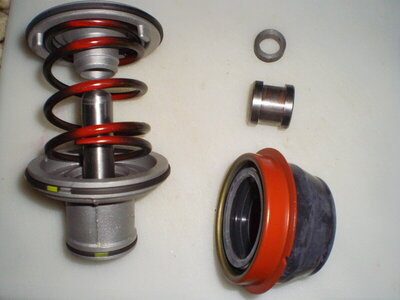So last night, I verified my forward drum/ front clutch retainer and also put back together the big block transmission (no pictures of this). The big block transmission will be sold as a core, but I carefully assembled it with all parts so it can be easily rebuilt. In theory, it could be run, but I would strongly suggest to anyone buying it not to do that.
Forward Drum (Front Clutch Retainer)
Here are the clutches and steels from the two forward drums:
View attachment 1197979
View attachment 1197980
So the big block had (unusually) 5 of each.
Here is the spring arrangement from each.
View attachment 1197982 View attachment 1197983
No, I didn't make a mistake. The big block only had 6 springs. A couple of people I have talked to can't figure out why.
Here is a closeup of a steel spacer from the big block. They are kind of a uniform gray, and these may be "Kolene Steel", that has a gray color and is used in high performance applications.
View attachment 1197981
So, I will end up using the big block forward drum with 5 clutches. This is much better than only 3 in the small block!
So now:
View attachment 1197987
I have ordered new front and rear bands, clutches, bushings and even tools to press the bushings in and out. So now I have to wait for those as the transmission will get a full rebuild. As I am able to, I will begin to rebuild my small block with refurbished parts, which (of course) will be posted here.
Thanks for the help and sticking with me!
Hawk




















